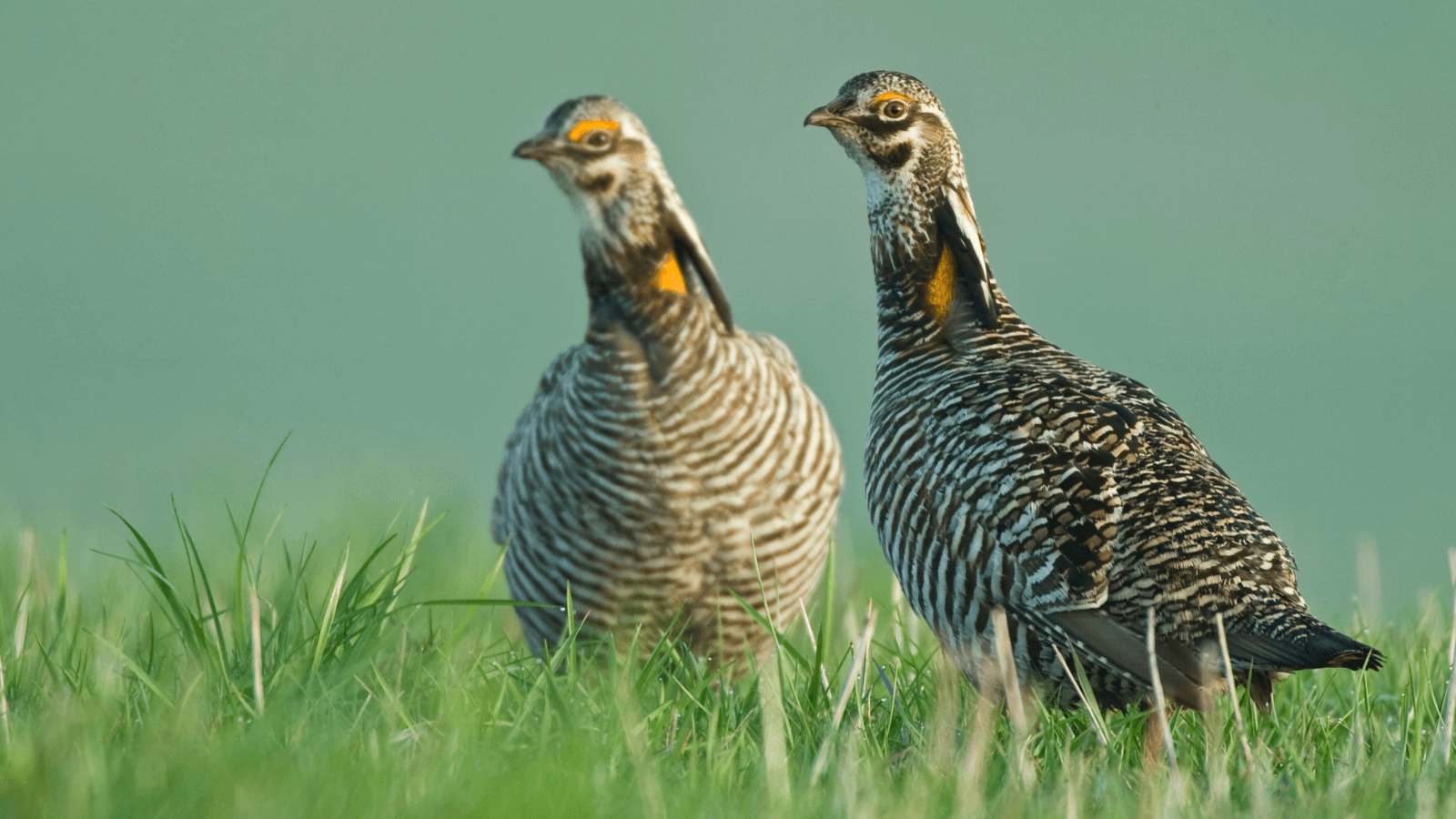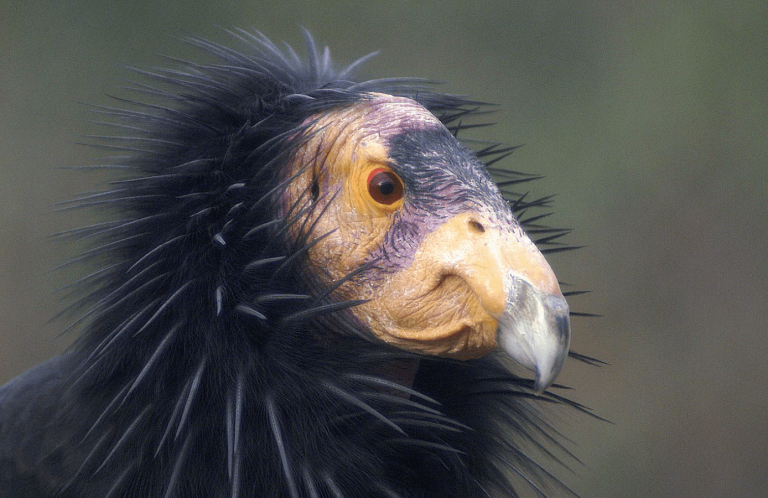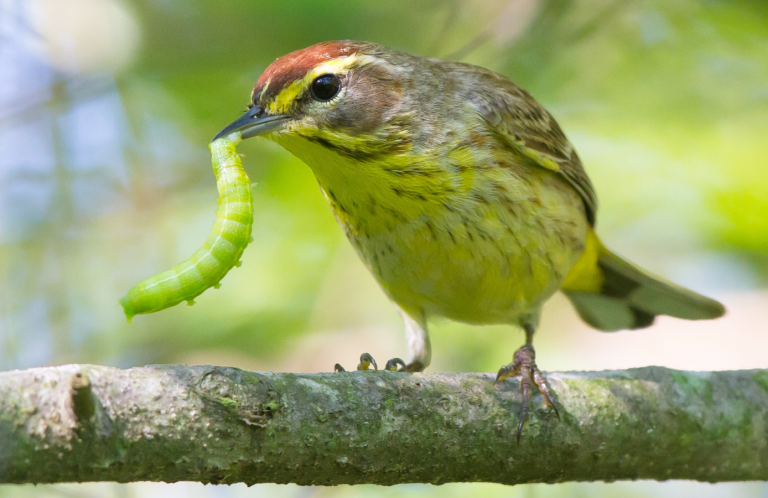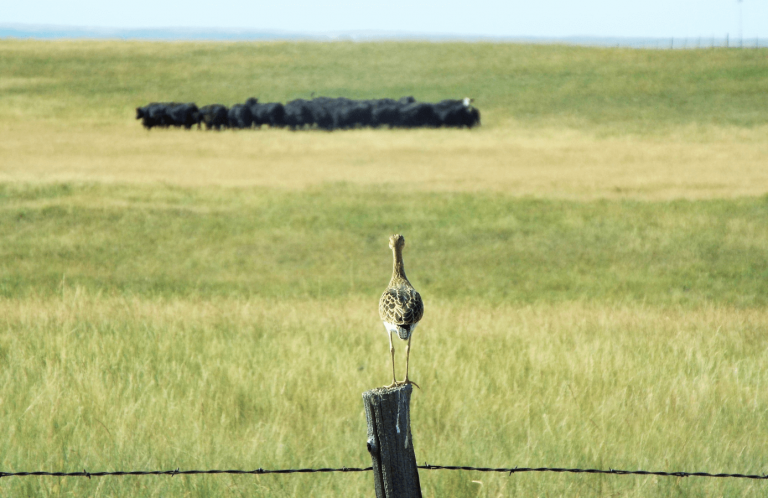Neonicotinoid Pesticides Threaten Attwater's Prairie-Chicken and Other Grassland Birds

The month of May brought yet more evidence that certain pesticides, including neonicotinoids, are a major threat to imperiled grassland birds.
In the United States, the Environmental Protection Agency (EPA) published new findings on the likely impacts of neonicotinoid (or “neonic”) insecticides on Endangered Species Act-listed wildlife, including the Endangered Attwater's Prairie-Chicken. In Europe, a new study found that pesticides are a leading cause of farmland bird declines, with implications for how these same pesticides could be jeopardizing U.S. grassland birds. Both add to the troubling picture of how neonic pesticides are contributing to avian declines.
EPA's New Neonicotinoid Findings
In its newly published finding, the EPA determined that the neonic insecticides imidacloprid, clothianidin, and thiamethoxam are likely jeopardizing the highly imperiled Attwater's Prairie-Chicken, a subspecies of the Greater Prairie-Chicken. This subspecies has been on the Endangered Species List since 1967, but its numbers have continued to plummet. While its historic population approached one million individuals, today there are fewer than 200 in the wild. Today, only two populations of the Attwater's Prairie-Chicken exist: one at Attwater Prairie-Chicken National Wildlife Refuge and the other on private property in Goliad County, Texas. Given the new findings regarding the impact of neonics on the species, neonics have probably contributed to this decline.
Though Attwater's Prairie-Chickens are primarily seed- and plant-eating birds, the EPA's findings about neonics' impacts on the species are due to reduction of insects caused by pesticide application. The EPA determined that current uses of neonics are likely to decrease pollinating insects and other beneficial bug populations in the range of the subspecies, ultimately leading to a decline in plant matter. Without pollinators and beneficial insects, plants do not propagate as efficiently and may fall prey to insects normally suppressed by other invertebrate predators.
In all, the EPA found that 200+ Endangered and Threatened plants, mammals, and invertebrates are jeopardized by current uses of neonics. The Attwater's Prairie-Chicken was the only Endangered Species Act-listed bird on the list, but in American Bird Conservancy's (ABC's) view, the EPA determinations do not adequately account for neonic seed coatings. If seeding coatings were taken into account, the number of listed grassland birds and other wildlife impacted by these insecticides is likely higher.
We are grateful to the EPA for advancing its investigations into impacts from neonics on species. Their findings, though, are likely just the tip of the iceberg.
In the E.U., Farmland Practices Are Reducing Bird Numbers
In the new paper published in the Proceedings of the National Academy of Science, researchers found that pesticide use on farmland is a major driver of bird population declines across Europe. Insect-eating birds have been especially hard-hit. The dataset examined 170 species across 20,000 sites in 28 European countries for a period of 37 years, making it the largest and most comprehensive ever for this type of analysis. In addition to agricultural intensification, the study examined effects on birds from land use with change in forest cover, urbanization, and climate change. In terms of which factor caused the greatest decline, agricultural intensification, which includes increased use of pesticides, won out.
The paper notes that it is hard to zero in on exactly how pesticides are driving bird declines, but the overarching theme is clear: more chemical-heavy farming means fewer birds.
What does this mean for North American birds? While the E.U. and United States are not interchangeable, we can glean that more pesticide and fertilizer-dependent agriculture is not good for birds.
So What Are We to Do?
American Bird Conservancy is grateful to work with Wild Farm Alliance to promote the understanding of how birds benefit agriculture through pest reduction, fertilization, and increasing overall biodiversity. ABC is also working to level the playing field for innovative farming practices that are less dependent on pesticides, such as cover cropping. At the State level, we are supporting legislation currently in development in California, New York, Connecticut, and Colorado, which would decrease the use of neonicotinoids as seed coatings. On public lands, we are piloting a program to reduce pesticide use for crop production on National Wildlife Refuges.
Stay tuned for some exciting developments of our ongoing research into the effects of neonics on North American birds, coming soon!
###
American Bird Conservancy is a nonprofit organization dedicated to conserving wild birds and their habitats throughout the Americas. With an emphasis on achieving results and working in partnership, we take on the greatest problems facing birds today, innovating and building on rapid advancements in science to halt extinctions, protect habitats, eliminate threats, and build capacity for bird conservation. Find us on abcbirds.org, Facebook, Instagram, and Twitter (@ABCbirds).
Media Contact
Jordan Rutter
Director of Communications
media@abcbirds.org


















































